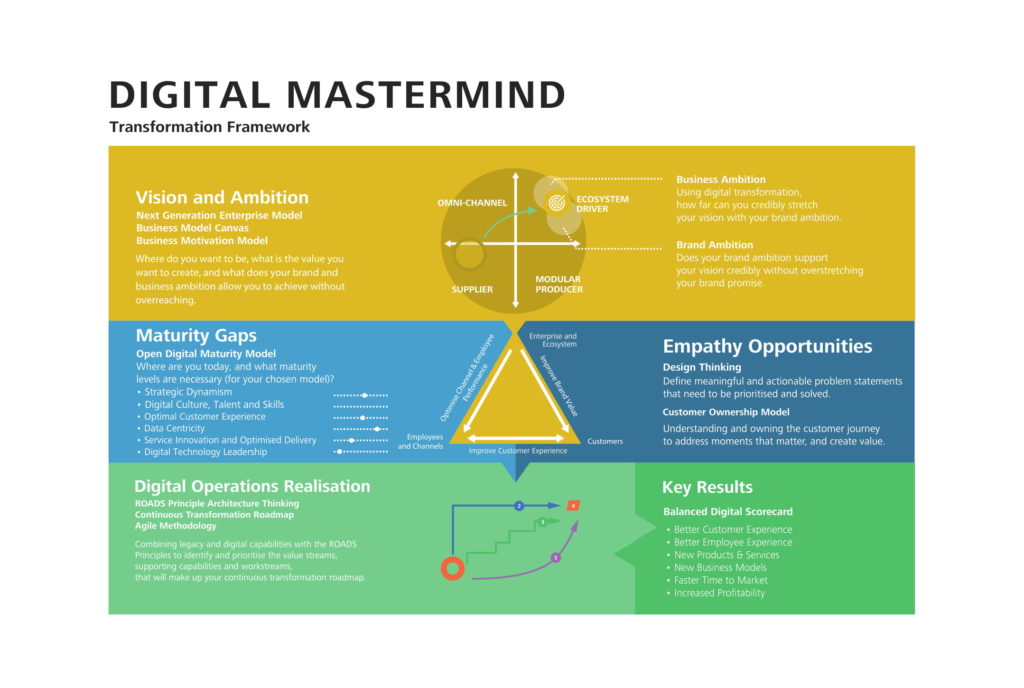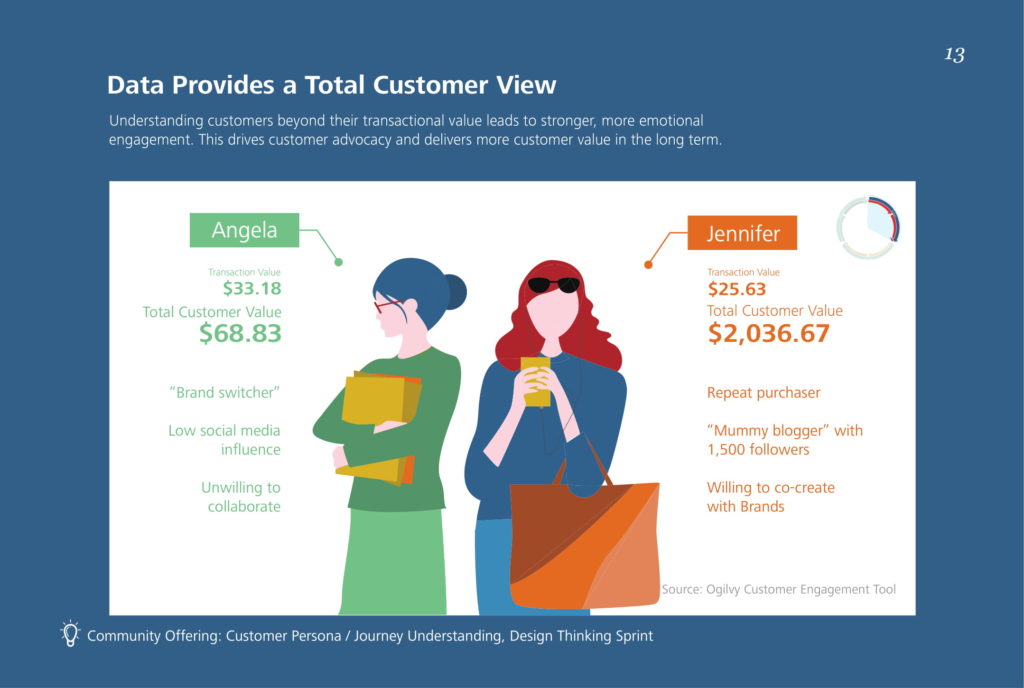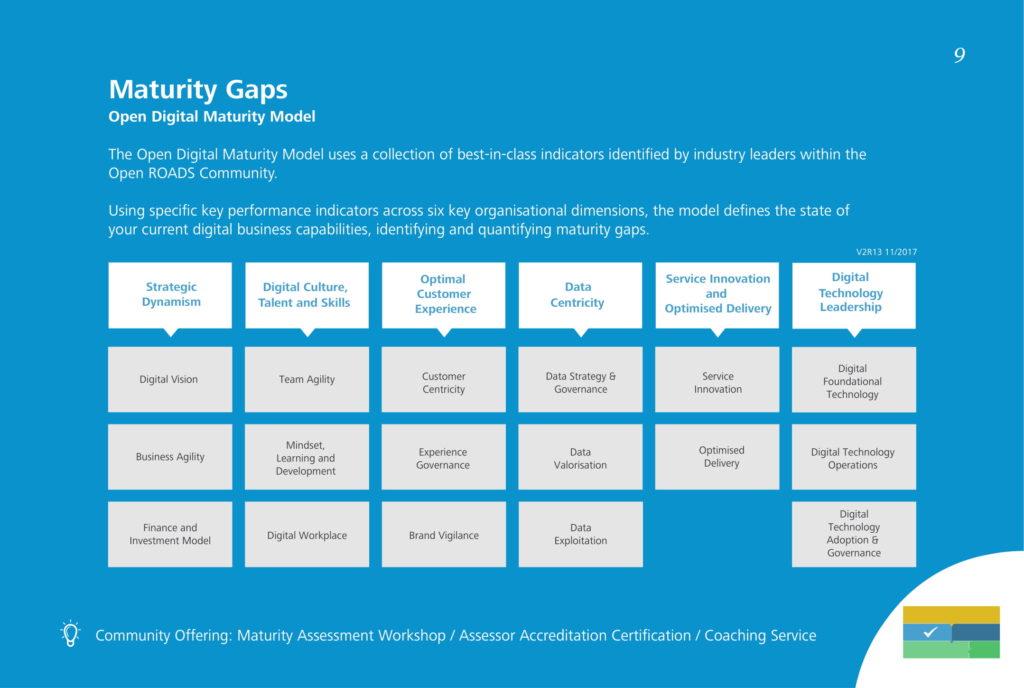Companies seeking to achieve digital transformation success must place the customer back at the center of their strategic efforts.
Digital transformation is no longer an option. Over the next three decades, digitization will reshape every industry and will have a direct impact on every global enterprise.
Today, enterprises view digital transformation as an indisputable imperative that is constantly disrupting existing business models in noticeable ways. In order to achieve digital success, the enterprise must harmoniously orchestrate their various technologies to work together and further drive innovation. Digital innovation has become an essential catalyst and a driving force of economic growth.
Digital transformation requires a massive undertaking, especially for larger, established companies. When executed properly, it has the potential for any business to be more aligned to meet its customer demands and increase the overall resilience of the enterprise. Embracing digital transformation at the enterprise level demands a strategic approach that factors in all of the goals, people, technologies and required integration to form a proper strategy.
Shifting the Digital Transformation Journey Back to the Customer
As enterprises are constantly striving to attain new business value, the speed of innovation is crucial.
Companies need to be swift, agile and leverage all aspects of technological innovation. A truly digital enterprise integrates emerging technologies as part of an overall strategic plan to be agile and enhance the business analytics of the enterprise. A digital enterprise relentlessly searches out, identifies and develops new digital business models, always ensuring that positive customer experiences are the foundation of digital innovation.
Designing a digital transformation framework for success is focused on innovation and attaining new business value, aimed at a creating an optimal user experience. To the point that the needs of the end-user need to be integrated into the service model. Consumers today, demand a faster, simpler, and enhanced digital experience that provides the best product and combines it with stellar service and most advanced technology.
Customers seek a deep experience far beyond the most basic product. They are eager to forge a connection with the brand, well before they even commit to buying anything. With the dynamics of businesses shifting back to customer experiences, it is imperative that brands identify every aspect of the consumer journey to meet customer’s expectations before enhancing their technological repertoire.
The Digital Mastermind: A Holistic Framework for Navigating the Digital Transformation Journey
For several years, Huawei has been at the forefront of digital transformation. In fact, 197 of the top Fortune 500 companies and 45 of the top 100 companies have chosen Huawei as their digital transformation partner. This list includes SAP, Accenture, Deutsche Telekom, Volkswagen, Oracle, Honeywell, GM, ABB, Intel, Sony, the Russian Federal Savings Bank and more.
How can a brand discover the customer’s expectations in order to adopt the correct technology? How can a company or enterprise plan their digital transformation strategy to ensure a positive customer experience?
In order to answer these questions, I reached out to Jonathan Hopkinson, Head of Analytics Solutions for Huawei’s Digital Transformation Practice Development, to answer several questions about the company’s new Digital Mastermind Playbook.
Briefly, the playbook outlines and provides a logical framework that brings the best practices from different industries into one cohesive customer centric model.
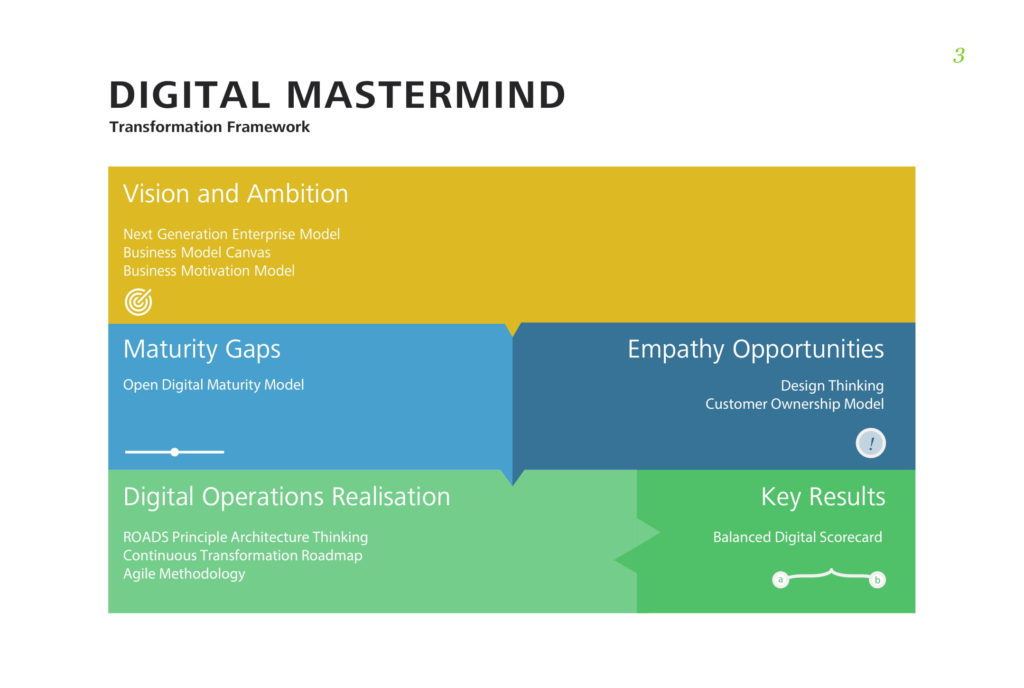
When it comes to putting together a plan, the best method of planning out a successful digital transformation is to view it through customer journeys—that is, the sum of an individual’s interactions with a brand across all channels to accomplish a task.
How can a brand, enterprise stay focused and ground their transformation process to ensure that their efforts are effective?
A key component of the Digital Mastermind framework is to use Design Thinking techniques to unearth the true needs of the enterprise’s customers, and then construct customer journeys and supporting value streams to meet those needs or “Jobs to be done”. This process will reveal which customer journeys are the most important to address – there is not a one-size-fits-all answer. Transformation investments can then be targeted at delivering the higher priority customer journeys, which should then deliver value to the customer and hence to the enterprise – thereby delivering a quick and positive ROI. A quick return on investment is a key part of helping leadership keep faith in the transformation activity.
How important is the data of various tests and trials in the mapping out of a successful digital transformation? If so, what can of data sets should an enterprise be seeking?
Data is crucial to track transformation progress. Digital Mastermind recommends that for each customer journey (and internal value stream) to be delivered, the key outcome and operational KPIs are determined, defined and tracked. “Outcome” KPIs are selected which show the business impact – these are items which have direct linkage to improved business performance. Operational KPIs may be less directly linked to business value, but nevertheless can track the operational improvements delivered by the transformation.
In fact, the Open ROADS Community has defined several hundred operational KPIs with a core of 20-30 most significant operational and Outcome KPIs. The specific KPIs to be tracked will vary with the digital maturity of the enterprise. For example, an enterprise which is just starting, may track the number of information elements which are digitised, rather than paper-based. A more developed enterprise may focus much more on time-to-market for new services.
With digital transformation being a buzzword today, how can companies strive to achieve such a critical milestone avoid the often siloed and compartmentalized corporate structure?
When constructing the “value streams” required to deliver the desired customer journeys, part of the process is to define the responsible functions/departments for each stage in the value stream, together with customer-centric outside-in KPIs which measure the performance of the overall journey. Having cross-domain KPIs, and tying employee and leadership incentives to these KPIs, is an effective way to remove silo’s, since co-operation becomes essential to achieving a healthy bonus.
Legacy Technologies vs Agile and Digitally Minded Disruption
Traditional industrial sectors continue to sustain their current business efforts by using existing legacy technologies embedded in their enterprise, it’s these sectors that are standing idle as new, agile, and digitally minded companies disrupt the entire industry.
With enterprises striving towards digital transformation, there is often a challenge that the brand’s legacy tech is operating in a methodical process, while the newer innovative model is to be agile and quick in response. How can an enterprise merge these two approaches to keep the transformation on course?
The burden of legacy is usually the key item which prevents Digital Transformation from being successful, and often from even beginning. For example, The MIT Sloan Center for Information Systems Research (CISR) has identified a number of different strategies to handle this.
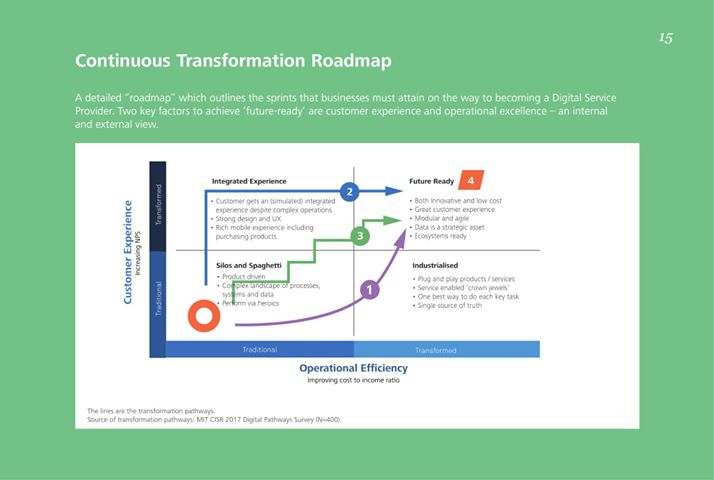
In the extreme case, with a large legacy burden, it is often better to establish a completely new business using green-field operations, then gradually move customers over to the new business. A less-radical approach, where feasible, is to encapsulate legacy systems within APIs, and then gradually replace such systems with typically cloud-based, virtual, replacement functions. Again, there is not a one-size fits all approach, but the frameworks exist to guide the best approach.
Digital transformation is clearly not achievable if a company isn’t equipped with a guide or map. Understanding the customer experiences will drive the digital transformation efforts for any enterprise.
Digital transformation can be defined differently by stakeholders. Developing a new mobile app might fit one group’s definition, but an enterprise-wide effort to rebuild competitive advantages might also apply. While the presentation offers a detailed assessment of each brand, what do you think the core factors that make a successful digital transformation actually work?
I would not consider that a new mobile app in isolation constitutes a digital transformation. In fact, a piecemeal approach like that is primarily why such transformation efforts fail. The approach advocated by the Open ROADS Community is that Digital Transformation should be holistic, driven by a realistic business ambition which the enterprise is seeking to achieve.
This ambition should answer such questions as:- What business do you want to be in? What customers do you want to serve? and What are you going to offer them? There are many frameworks and consultancies out there to help companies determine this strategy and ambition. This can then determine the target for the Digital Transformation activity. Without a well-considered target, transformation investments risk becoming ad hoc, based on wishful thinking.
Because technology is so integrated in today’s business landscape, almost every business is a digital business to some extent. Old systems and processes have to be rethought, and new technologies have to be put in place in order for businesses to stay competitive within their industry. Companies are faced with many challenges as they navigate their way through this digital transformation. These hurdles can range from limited budgets for new technology to lack of the expertise or know-how required to roll out new digital initiatives. But the one challenge that is crucial to overcome is creating an effective digital strategy.
Strategy is what gives businesses the framework they need to effectively utilize the digital tools they have on hand. And without it, efforts and funds can go wasted.
With customers driving enterprises towards digital innovation, positive digital experiences become the foundation for successful transformation.
It is customer experiences that serves as the impetus for businesses to innovate, create and measure its overall digital strategy. Regardless of industry or business, the Digital Mastermind enables any enterprise to plan their customized transformation pathway and identify the required business capabilities that are predicated on consumer satisfaction and positive customer experiences.
Disclosure: The author is a Huawei Key Opinion Leader and has benefited from their products and services. The opinions of this article, however, are completely his own based on experience.


